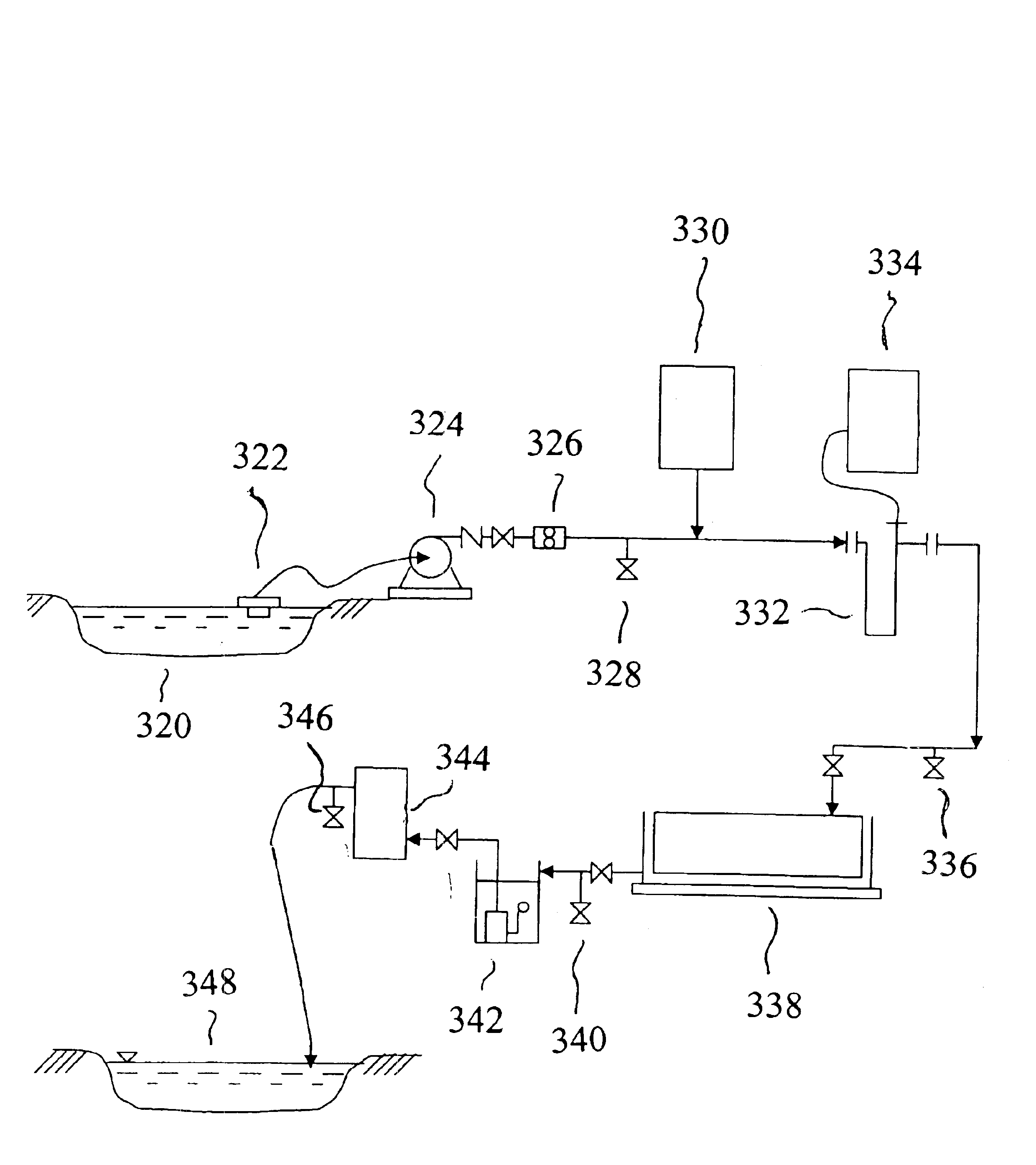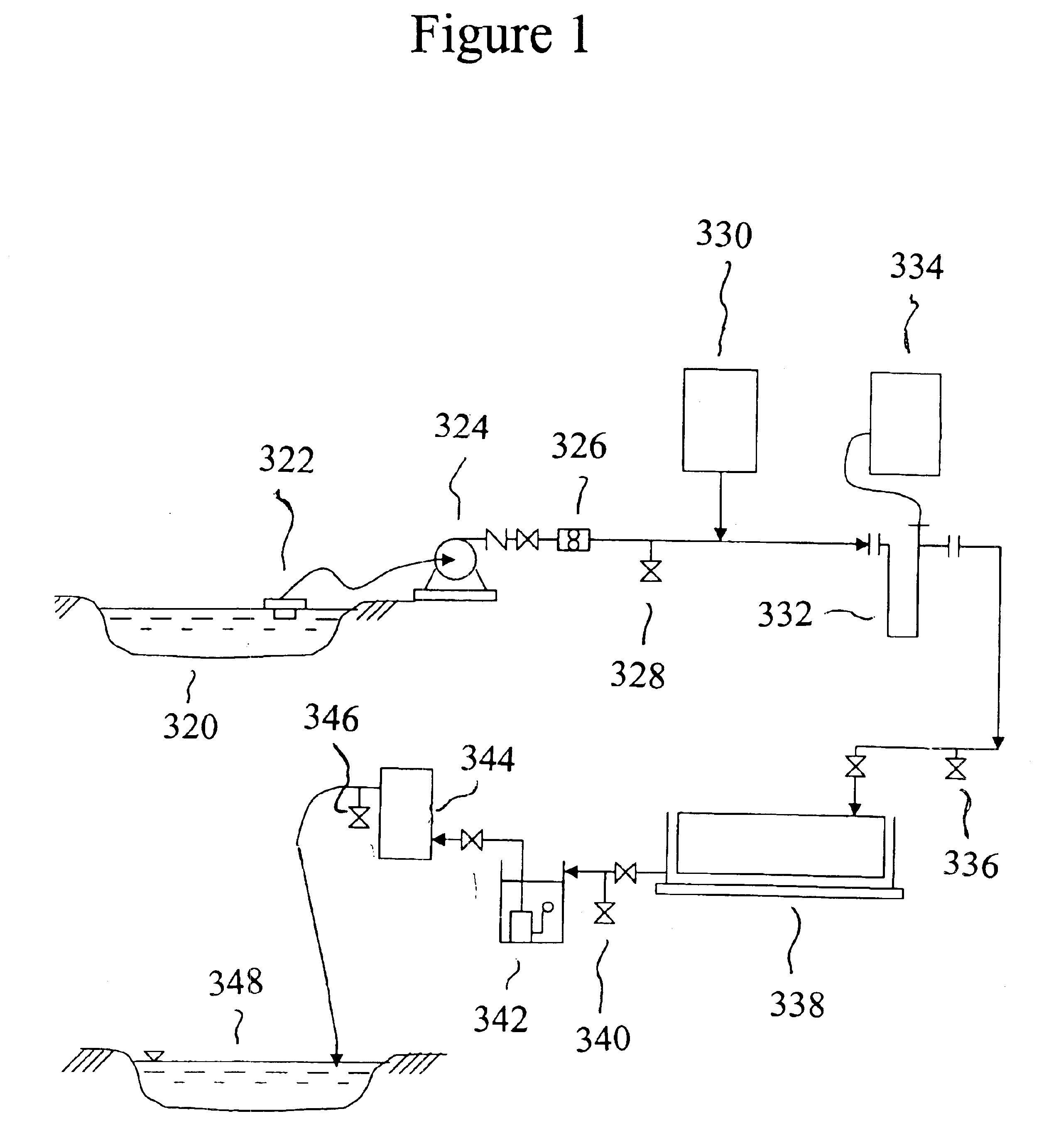Animal waste effluent treatment
a technology of animal waste and effluent, applied in the field of sludge remediation, can solve the problems of high transportation and disposal costs, major disposal problems, and high disposal costs of microbial sludge solids resulting from conventional municipal sewage treatment. achieve the effect of low energy
- Summary
- Abstract
- Description
- Claims
- Application Information
AI Technical Summary
Benefits of technology
Problems solved by technology
Method used
Image
Examples
Embodiment Construction
to the sludge stream or batch sample and sonicating the resultant mixture with a high power sonicator of at least 3 kilowatts to make a more homogeneous dispersion of the fecal bacteria.
[0022]Yet another embodiment is a method for destroying fecal bacteria in a sludge stream or batch sample, comprising: sonication of the bacteria with a sonicator to form a more homogeneous dispersion; and drying the bacteria at low temperature.
BRIEF DESCRIPTION OF THE DRAWINGS
[0023]FIG. 1 depicts a swine effluent treatment process for a lagoon according to an embodiment.
[0024]FIG. 2 depicts a process flow according to an embodiment.
[0025]FIG. 3 shows representative test results according to an embodiment.
[0026]FIG. 4 shows test results obtained from an embodiment
[0027]FIG. 5 shows replicate measurement results for various material parameters
DETAILED DESCRIPTION
[0028]Shortcomings in the previously known art are alleviated by devices, systems, methods and other discoveries that reduce odor, reduce und...
PUM
| Property | Measurement | Unit |
|---|---|---|
| temperature | aaaaa | aaaaa |
| ultrasonic energy | aaaaa | aaaaa |
| ultrasonic energy | aaaaa | aaaaa |
Abstract
Description
Claims
Application Information
 Login to View More
Login to View More - R&D
- Intellectual Property
- Life Sciences
- Materials
- Tech Scout
- Unparalleled Data Quality
- Higher Quality Content
- 60% Fewer Hallucinations
Browse by: Latest US Patents, China's latest patents, Technical Efficacy Thesaurus, Application Domain, Technology Topic, Popular Technical Reports.
© 2025 PatSnap. All rights reserved.Legal|Privacy policy|Modern Slavery Act Transparency Statement|Sitemap|About US| Contact US: help@patsnap.com



